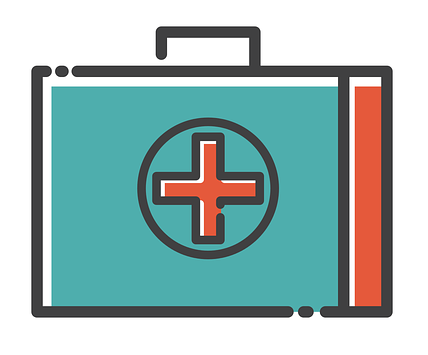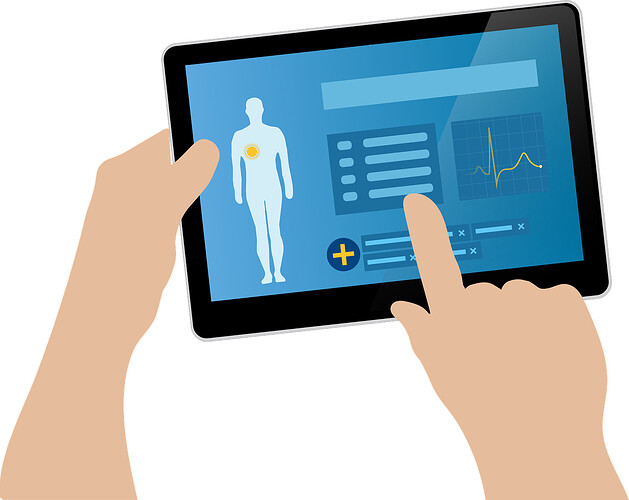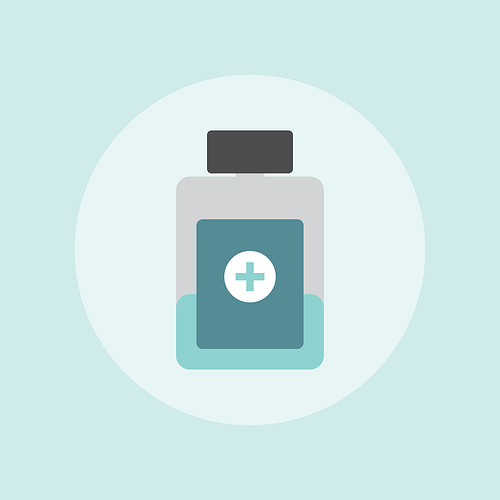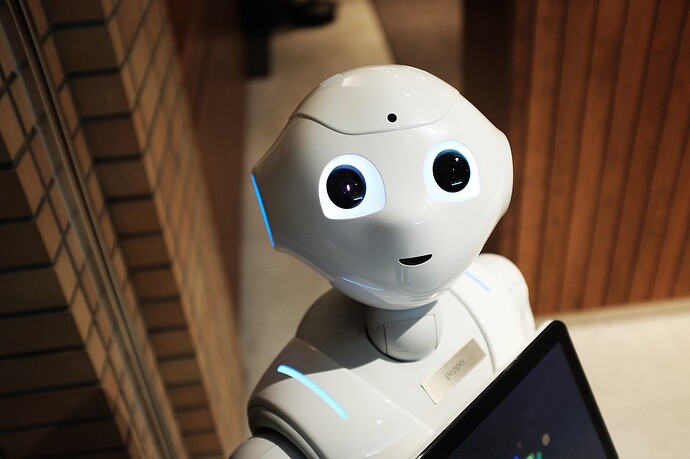Everyone’s watching Black Mirror, the British sci-fi anthology looking at how technology might impact society. So let’s kick back and let your imagination roam as we imagine how blockchain could revolutionize medicine.

Let’s think for a second: what if Amazon’s Alexa, Apple’s Siri, or Google could integrate into the hospitals as an AI-driven OS? Imagine an ecosystem for medical IoT — what would that be like?
Doctor’s POV
Let’s follow Dr. Stevenson around to find out. Dr. Stevenson is a second year medical resident at the StarTrek Medical Center.
7:30AM: As Dr. Stevenson heads for the locker room to change, the door swings open automatically utilizing a smart lock integrated with facial recognition tech. The AI Iris greets Dr. Stevenson over the loudspeaker as he walks through the door, presenting his clean scrubs directly to him (size large, if you must know). As he pops in a pea-sized earpiece, Iris moves to his earpiece.
7:45AM: As he walks from the locker room to the meeting room for his morning briefing, Iris estimates Dr. Stevenson’s walking speed and time of arrival to the meeting room via smart door access while updating Dr. Stevenson on the overnight events for his patients. He crosses from room to room as the doors open and close automatically paced to his walking speed. As an integrated AI, Iris is linked to the hospital’s electronic medical records.
Iris : Mr. Smith in Ward 10, Bed 10 developed a cough overnight and the on call doctor gave him some cough syrup at 5AM. He may be feeling a bit drowsy this morning when you see him. Mrs. Monna in Ward 10 Bed 15, her daughter visited last night and would request that you give her a call this morning for updates on her mother’s antibiotic treatment. I see that you have an opening in your schedule at 12:30PM today. Can I book the phone call for you?
Dr. Stevenson : Yes, please book the phone call. Let’s review the patient list.
Iris : Your attending is Dr. Lee. You have 5 inpatients under your care. Bed 1 is due for discharge tomorrow. Based on the historical data from the emergency room admissions, you will likely receive 5 more patients by the end of this week. Mr. Smith does not have a discharge plan. For your outpatient clinic, you will be caring for 15 patients today, 3 for scopes and 12 for follow up visits. Sorry, Ms. Lenna canceled her clinic visit just now via the hospital’s app. You will have 14 patients in your clinic session.
A warm cup of coffee (black coffee, straight up, just the way he likes it) is automatically brewed by a smart coffee maker as instructed by Iris.
7:55AM: No one has to take attendance. The meeting room has a camera fitted with facial recognition software which automatically counts and tallies who has arrived for the briefing. Dr. Lee has not arrived. He streams the briefing from his car.
9:00–12:00PM: Dr. Stevenson observes Dr. Lee in the scope room. Iris is now transferred to the screen for the scope machine.
Iris : Would you like for me to pull up Mr. Montez’s previous scope video to compare?
Dr. Lee: Yes, please sync up today’s video with the scope video from 6 months ago.
Iris syncs the videos concurrently while Dr. Lee compares the videos with the real-time images.
Dr. Lee: Iris, biopsy this ulcer.
Iris moves onto the scope camera. On the scope monitor, a tiny forcep can be seen extending out to extract the tissue sample.
Dr. Stevenson: Iris, can you describe the differences between the video from today with the one from six months ago?
Iris : Of course. The ulcer that was seen on today’s video was 1 mm on the antrum. My OS allows me to compare anatomical videos precisely.

12:30–12:45PM:
Iris : May I connect you to Mrs. Monna’s daughter?
Dr. Stevenson: Sure, go ahead.
Mrs. Monna’s daughter : Hi Dr. Stevenson, I just wanted to find out how my mother is doing?
Dr. Stevenson: Well, she is improving a lot from the IV meropenem that we gave her. We believe she has recovered from her neutropenic sepsis and should be able to go home soon.
1:00–5:00PM :
Iris : Should I pull up your first patient’s information?
Dr. Stevenson : Sure [Iris pulls up the first patient’s electronic medical records and projects it onto the doctor’s computer screen].
Dr. Stevenson dictates all of his medical notes via Iris. While he is examining the patient, Iris is scribing and generating notes. By the time he is done with his patient, Iris has come up with a summary for Dr. Stevenson to review. After editing the electronic medical record summary for his patient, Iris sends encrypted updates to the patient’s mobile device.
Blockchain-based AI
From an administrative perspective, a centralized AI (like Google Home and Alexa) is not the way to go for a smart hospital.If you’ve watched Westworld , you know that we can only ask Dolores about her thought processes to examine the integrity and security of the data. (Spoiler alert!) Obviously, that didn’t work out so well!
Image Credit: Slashfilm
Venturebeat pointed out some crucial key points to think about:
- The integrity and security of the data (e.g. are the inputs accurate and reliable? Can they be manipulated or stolen?)
- The machine learning algorithms that inform the AI (e.g. are they prone to excessive error or bias and can they be inspected?)
- The AI’s interface (e.g. does it reliably represent the output of the AI and effectively capture new data?)
It would be a nightmare if the hackers were to hijack the hospital’s centralized AI and release thousands of confidential medical records (such as sensitive confidential information like HIV status) to the world, putting millions at risk of discrimination at work and in their personal lives, not to mention the endless lawsuits. Therefore, a centralized AI is not going to cut it. In order for a hospital to incorporate AI into its practice, decentralization will be the key. Blockchain can help make that happen. Companies like Embleema Health are already working on blockchain for medical records.
Data in exchange for Tokens
Another problem we, as the general population, are currently facing is that we are giving away most of our data for free (e.g. to Facebook, Google, Netflix, and Apple every time we sign into one of their apps). In order for machine learning algorithms to improve, they need access to human data. This way they can process, refine, and improve their algorithms by training themselves against human data. Adding blockchain to the picture can be mutually beneficial for the consumers who are providing the data training set for AI improvement. For example, I will only provide xyz amount of my de-identified electronic medical records in exchange for xyz amounts of tokens under my smart contract via blockchain. If the whole ecosystem is integrated, we may see something as interesting as selling my medical records to big pharma to pay for my expensive disease treatment.
In the recent AI in Healthcare forum hosted by Stanford University in January 2018, Professor Andrew Ng, VP of Baidu and world expert in AI, and Dr. Matthew Lungren, a Stanford radiologist, joked about how doctors in general are fearful of being replaced by AI. But what we should actually be scared of is a centralized AI that is not secured for the healthcare landscape.Such a system could result in major risks for patients and providers alike. To integrate AI and blockchain into healthcare, we should explore decentralizing AI and implementing a token economy into healthcare data to give patients peace of mind regarding their health information while empowering them to choose how they want that data used.
Plot twist
With a decentralized AI, we may end up with a Skynet.





